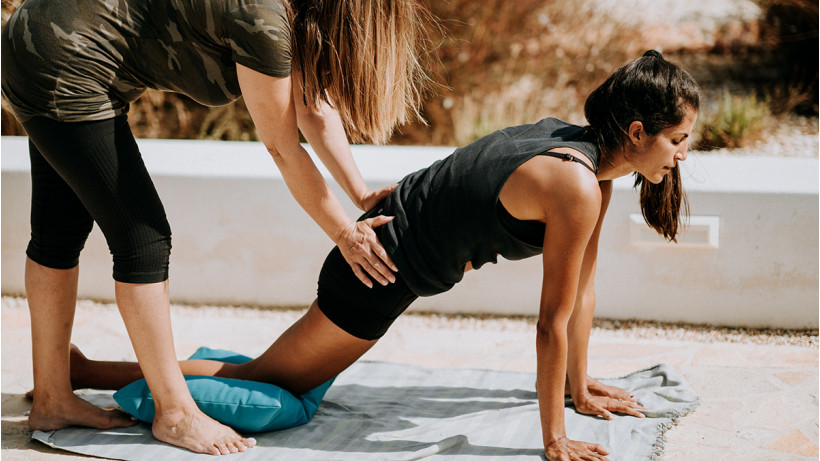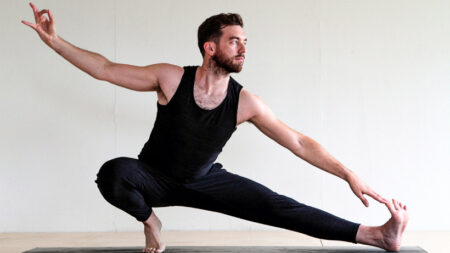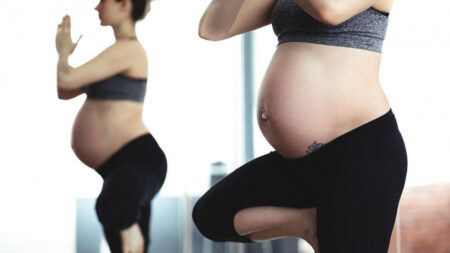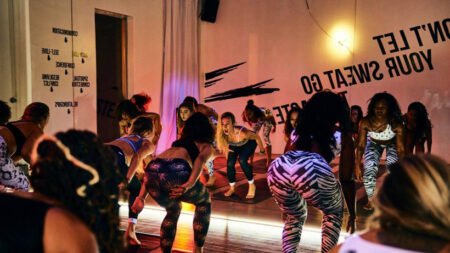Our guide to starting out on a yoga journey
There are many misconceptions when it comes to yoga. It’s not uncommon for people to think of it as a practice predominantly for women, or a spiritual activity. Many people in fitness might also dismiss it as a training method inferior to activities focused on strength or conditioning. But the biggest myth of all is that it’s only for the flexible.
While it’s understandable that people who don’t really know much about yoga might think this way, there’s a lot more to it than that. Yoga is an ancient discipline, developed up to 5,000 years ago in India as a comprehensive system for wellbeing on all levels: physical, mental, emotional and spiritual.
- Get kitted out: The best yoga mats for every type of yogi
According to the YogaAlliance, yoga is a system, not of beliefs, but of techniques and guidance for enriched living. It’s derived from a Sanskrit word ‘yuj’ which loosely means ‘union’ – or a path through which an individual unites with the entire existence. Sounds pretty deep, right? But basically it means how we are all part of a greater energy.
In recent times, yoga has branched out in many new directions, some of which are quite different from its traditional form; however, all approaches are intended to promote some aspect of wellbeing. Now many millions of people use these various aspects of yoga to help raise their quality of life in areas such as fitness, stress relief, wellness, mental clarity, healing, peace of mind and spiritual growth. And the big news is that more and more people are taking up the practice as they begin to realise the rewards it can bring.
The benefits of yoga
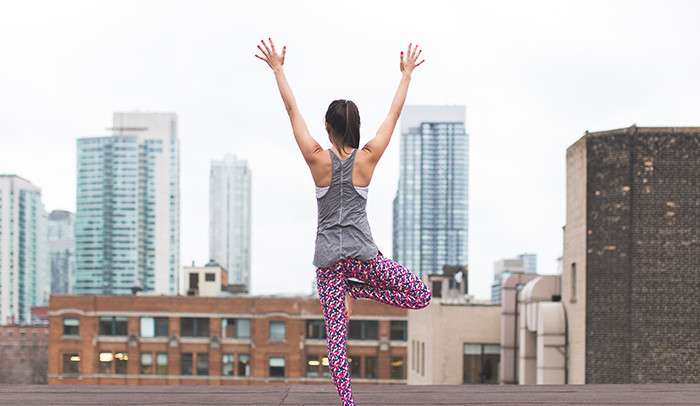
There are a myriad of benefits to regular yoga practice, and not just physically. Yes, many studies have suggested that yoga is a safe and effective way to lower blood pressure, increase strength and bone density and improve balance and flexibility, but it’s also proven to have many mental and even spiritual benefits.
There’s also evidence that regular yoga practice is beneficial for people who suffer from anxiety, depression and stress. Alice Jackson, Barcelona-based yoga teacher and founder of MoretoYoga, believes this is because it gives you time and space to connect to your body and mind, something which in our busy day-to-day doesn’t often happen.
“When you’re more connected you generally feel happier and more grounded,” she says. “A regular practice will not only strengthen you physically but it will shine a light on the fact that you’re capable of so much more than you realise, you just need to get quiet enough to notice it.”
This, she adds, is a “huge benefit” of yoga is because – through the power of breath – you can learn to calm your nervous system. A calmer nervous system will lead to you feeling more relaxed and less anxious.”
Different styles of yoga
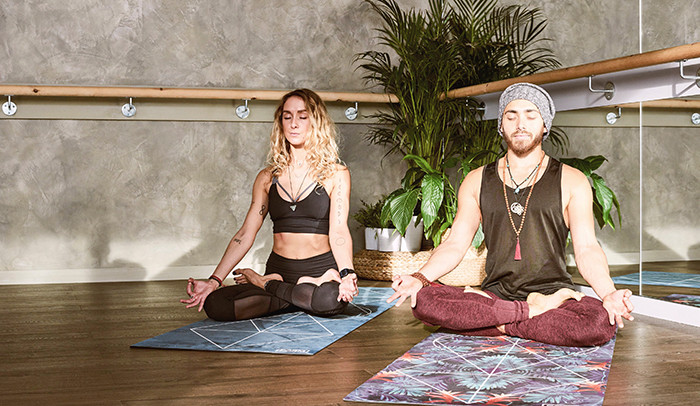
Before starting yoga, the first thing you should know is that there’s not just one type that you can practise. There are many different branches of yoga, and different practices will suit different people depending on what they want to get out of it.
Yoga studios usually offer an assortment of yoga class types, here are the most common class types you’ll find in the majority of studios, as well as what kind of person they should best suit.
Best yoga for beginners
Hatha: This type of yoga is good for beginners because it includes most yoga styles. It’s an old system that includes the practice of asanas (yoga postures) and pranayama (breathing exercises), but it’s practised more slowly and with more static posture holds to help bring peace to the mind and body, preparing the body for deeper spiritual practices such as meditation.
Best yoga for alignment
Iyengar: One particular type of yoga known for its precise focus on alignment is Iyengar yoga. This comes directly from Hatha yoga but has evolved into a precise and clear method focusing on three aspects: alignment, sequencing and timing. In an Iyengar class, props will be used to assist students into an asana without putting them at risk of injury. Effective alignment can then help to achieve balance between body, mind and breath. Poses are also held for longer periods of time.
Yin: As a form of restorative yoga, Yin helps those practising to enter into a deep state of relaxation and release. According to Indaba, one of London’s most popular yoga studios, Yin will help develop inner awareness and serenity as you ease into mainly reclined or seated postures. Holding these healing and prop-supported poses for three minutes or more will supposedly open the thicker layers of connective tissues around the joints, unravelling areas of tension that a dynamic yoga practice can not always access.
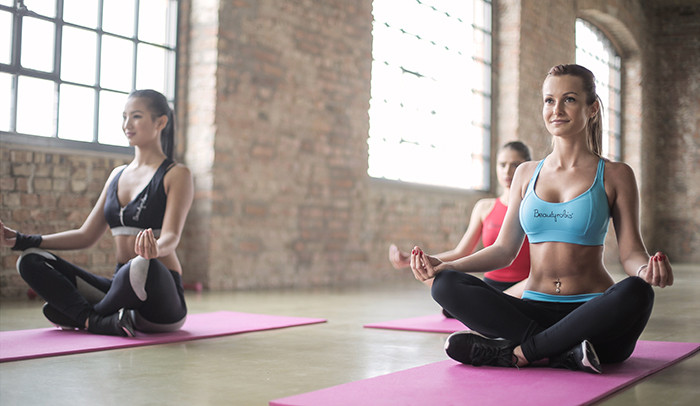
Best yoga for sweating
Bikram: Bikram yoga is a favourite for those who love to sweat. It was created by Indian yogi Bikram Choudhury in the early 1970s (hence the name), and was designed with a sequence of 26 poses to stretch and strengthen the muscles as well as compress and “rinse” the organs of the body. The poses are done in a heated room to facilitate the release of toxins.
Forrest: Similar to Bikram, Forrest Yoga is taught at a temperature between 25-30 degrees but has a strong focus on core strength. Guided by the breath, intelligent sequencing will build flexibility and strength while relieving tension.
Best yoga for intermediates
Those who have been practising yoga for more than a few months and want to up the intensity will probably go onto a more dynamic yoga practice; a type of class that is not only meditative but also physically challenging. Here are some of the more popular classes you’ll find at most yoga studios.
Ashtanga: Ashtanga is a type of yoga that leads students through the same sequence of postures before moving onto standing postures, seated postures, the finishing sequence and finally relaxation. It’s usually quite an energetic practice that will definitely make you sweat a bit. For some, Ashtanga Yoga is quite spiritual, while for others it’s more physical, but whichever reason, it’s an opportunity to release the mind from everyday distractions. Those who get into Ashtanga should know that there are six “series”: primary, intermediate and four advanced series, each of which has a set order of poses that increase in difficulty and will require you to work up through as you progress.
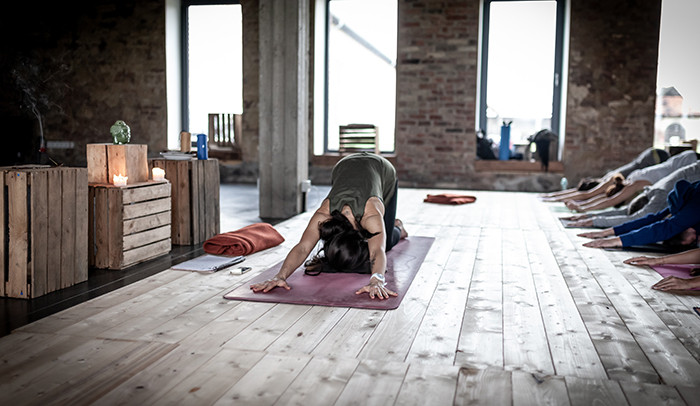
Vinyasa/Vinyasa flow: A vinyasa or “vinyasa flow” class is usually an umbrella term for a yoga class where you will “flow” from one pose to the next without the teacher stopping to talk about the finer points of each pose. The idea is that you come away with a good workout as well as a yoga experience. If you’re new to yoga, it is a good idea to take a few classes in a slower style of yoga first to get a feel for the poses. Mainly influenced by Ashtanga, some studios call it flow yoga, flow-style yoga, dynamic yoga or vinyasa flow.
Power: Power yoga is a general term used to describe a vigorous, fitness-based approach to vinyasa-style yoga. In this type of class, power yogis will move quickly between poses, but they will often focus on building strength rather than flexibility.
Mysore: This traditional method of yoga looks to deepen your understanding of yoga, developing your focus and discipline while enabling you to take control of your own practice. The teacher does not lead the class as a group by calling out the poses, but will instead introduce you to new asanas as you master the preceding postures in the sequence. The idea is that over time you will naturally commit the series to memory, but the teacher will always be there to prompt you, adjust and assist.
Best yoga for the more experienced
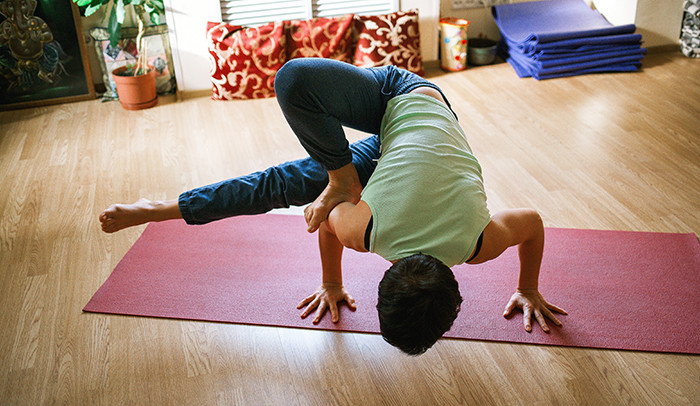
These types of yoga are best for those who have been practising yoga for some time and are looking to push themselves and really deepen their practice.
Rocket: This is thought to be the original power yoga. Created by Larry Shultz in San Francisco in the ‘80s, the Rocket system is a remix of the Primary and Intermediate Series of Ashtanga yoga, designed to make the entire practice accessible to everyone without the need to work your way up through different levels. As a result, it’s a very strong practice that will help sweat out your worries and cares as you link movement and breath while strengthening your body.
Yogasana: This is probably one of the strongest types of yoga you can do, and is not for the faint-hearted. It involves a vigorous and fast vinyasa flow with deep physical poses and stretches. Yogasana is not just a high energy class, however, it is usually very spiritual, and will generally include music and hands-on adjustments. As you sweat your way through the fast paced vinyasa, it will challenge your stamina but leave you feeling rejuvenated, energised and connected with your inner self.
Other types of yoga/hybrids
Here are some alternative versions of yoga you’ll probably see on the schedules of many studios.
Acro: Acro yoga is a physical practice which combines yoga, acrobatics and Thai massage, usually including partner and group acrobatics in which someone is lifted. It’s a popular movement worldwide, and, especially between smaller communities, is more commonly referred to by practitioners simply as “Acro”.
Aerial: Aerial yoga, also known as AntiGravity yoga, is a type of yoga in which the traditional yoga poses are practiced in a silk hammock hanging from the ceiling. This specially-designed hammock supports the hips and waist. The idea is that challenging poses, such as inversions and reverse postures, become easier to practise with the support of the hammock.
Workshops
Not a type of yoga, but most yoga studios will have a section called “workshops” alongside their class schedules. These will usually be longer, all-encompassing classes lasting over a few hours which will help you dive deeper into a specific part of yoga or a related discipline to help you with a part you’re struggling with in class, or explore a part more that you already enjoy. The most popular types of yoga workshops you’ll find are arms balancing, handstands, and beginner or basic yoga.
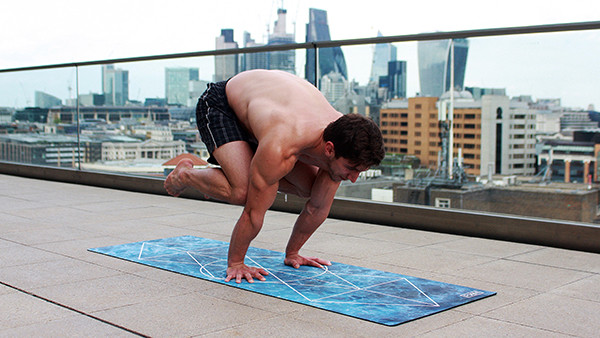
Getting started
The biggest piece of advice to remember is everyone was a beginner once so don’t get caught up comparing yourself to others or thinking you are ‘bad’ at yoga. Nick Higgins, Hotpod Yoga co-founder and yoga teacher, reassures newbies not to worry, as all our bodies are unique.
“Each person has their strengths and weaknesses and finding out yours is part of the journey,” he says. “Most poses can be modified so there should be a variation that suits you. If it ever gets too much, just take a moment to move into child’s pose and take few deep breaths to reset.”
Most importantly, Higgins adds that you should go to class with an open mind. “Enjoy what each session on the mat brings as it will be different every time!”
Home or studio?
If you’re completely new to yoga, we’d recommend starting your practice in a studio. There you will have the support of an instructor to guide you through the different sequences. If you’re completely new to the concept of yoga, you should look for a beginner class. Most yoga studios offer some kind of slower, more basic class better suited to those starting out.
And don’t worry if you can’t find a specific beginners class or workshop in a studio near you, all yoga classes are open to beginners as the teacher will offer different options for poses varying in difficulty depending on your skill level.
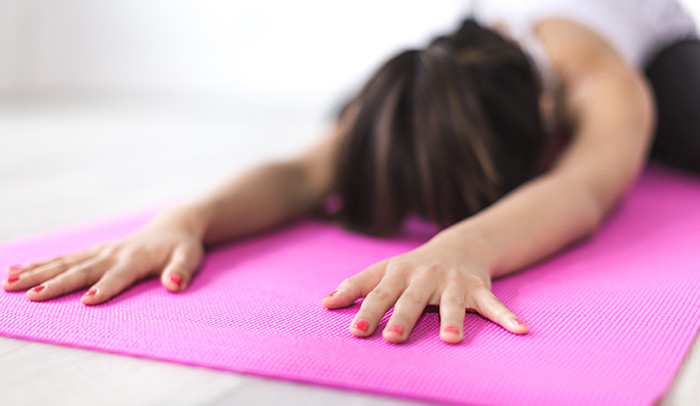
If you have been to a studio and feel it’s just not for you, you’ll be happy to hear that – due to the growing popularity of streaming fitness – there’s now an endless slew of apps available dedicated to offering yoga classes in the comfort of your home.
OmStars, Fiit, Movement For Modern Life, FitON and Plankk are just a few of the services offering premium streaming. And if you don’t want to dedicate yourself to a monthly subscription just yet, there’s hundreds of classes taught by yoga teachers available for free on YouTube. Yoga with Adriene is one of the most popular channels for newbies.
However, we’d recommend your first ever yoga experience to be with a real life instructor in a class environment, as they’ll spot if you’re doing anything wrong and will correct you if they see you need a hand with your with your alignment and placement.
Finding a studio (and teacher)
We’d suggest the best way to find a studio you like is by looking what’s local to you. With yoga being so pervasive nowadays, you’re likely to find a studio in your neighbourhood, or at least in the next one. The closer and more convenient the studio, the more likely you are to return, and to get the best from yoga it’s best to practise consistently.
We’d also recommend going to a yoga-specific studio, at least at first, as classes within commercial gyms aren’t always taught by certified yoga teachers, and while they can offer something similar, it’s just not the real deal.
Another piece of advice is to experiment as much as you can with different yoga styles until you find the one that you like the most. You’ll also enjoy a class more the better you connect with the teacher and their teaching style, so balancing that with the convenience of the location and factors like cost are all important. It’s quite common for people new to yoga to dismiss it on the basis of the teacher or the studio not being a good fit, but finding the right one can change the experience significantly.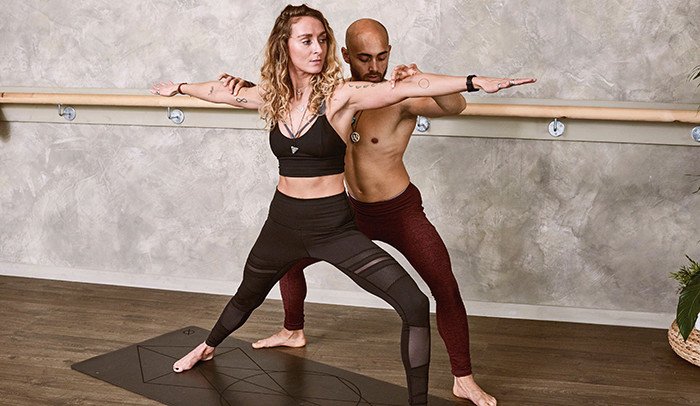
As you become more seasoned and you start picking up some of the Sanskrit phrases for poses, you’ll soon realise that it’s a universal language for yoga practitioners. No matter which city or country you’re in, you’ll be able to visit a class and practise with like-minded yogis. Here are some of our favourite yoga-dedicated studios in different cities around the world:
London: Indaba, Tri Yoga, TripSpace, LevelSix, Fly LDN, MoreYoga, Yolk, Bhuti, Frame, Stretch, ChromaYoga, YogaLoft, Another_Space
San Francisco: AstaYoga, Lovestory Yoga, Yoga Tree New York: Yoga to the People, Yoga Vida
Barcelona: Yoga Bindu, Shanti Vida
Sydney: BodyMindLife yoga
What to wear
The sheer amount of brands that have jumped on the yoga bandwagon of late is overwhelming. The likes of Sweaty Betty, Lululemon, Nike, and a plethora of other big names have launched apparel lines aimed specifically for practising yoga in, and while they might look pretty, their price tags usually aren’t.
The fact of the matter is, you can wear just about anything for yoga, within reason. The general rule of thumb is to keep it comfortable. You’ll see many seasoned yogis wearing more loose-fitting clothing, but leggings that give you an extra grip, especially when sweaty, are a good call.
There are definitely fewer options out there for men, at the moment,, but if you’re looking for a eco-friendly brand specialising in yoga clothes for men, you should check out Ohmme Apparel (although take note sizing runs quite small) and the latest ranges from Lululemon.
Practice essentials
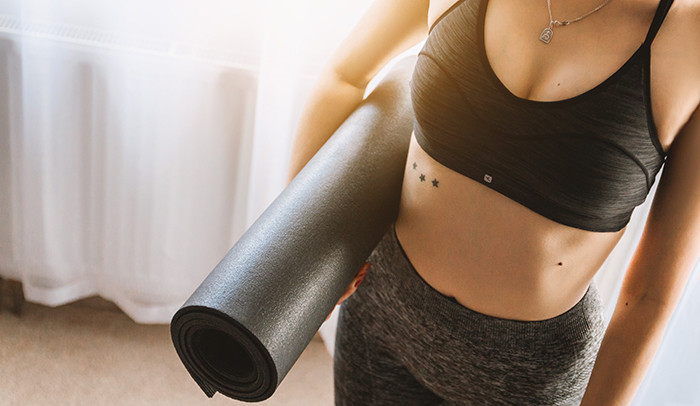
Most studios – especially those dedicated to yoga practice only – will have their own yoga equipment. But in case you don’t want to be caught short, or need some essentials for practising at home, here are some must-have yoga practice aids.
Mats
Most obvious of all, you’ll need a mat to practise yoga. And a decent one too. If you sweat a lot, it’s worth looking into non-slip mats, as these will give you a better grip when you’re moving around your mat, especially for any balances. This is going to be your best friend, so it’s important you find the right one for you. Liforme, Yogi Bare and Manduka are popular choices for most yogis
For your first ever time practising yoga, we’d recommend holding off on buying a mat until you know you’re going to like it. Most studios will provide them, or at least let you loan one for the duration of the class for a small fee.
Blocks
A yoga block is usually a brick-shaped prop made from foam, bamboo, wood or cork. The block is often used as an extension of the arms, but can also support the back, head and hips to help the body settle into a pose.
Straps
A yoga strap is a fabric belt-type tool that is used during practice, usually around your feet, to allow you to extend the stretch in this pose and increase your flexibility. A yoga strap can also help you align your joints properly during yoga to avoid injury. Again, most studios already have these but it’s good to have your own just in case.
Towels
If you’re new to yoga, it’s very likely you’ll break a sweat during your practice. In our experience, many studios don’t provide towel service, so it’s definitely worth investing in your own. Travel towels are good, too, especially the microfibre variety, as they don’t get too wet – ideal for transporting in your bag afterwards.
Water bottles
Most yogis will tell you not to drink during a class as water can lower your body temperature. The idea of yoga is to increase the ushna (inner fire) inside you, which is said to help you detoxify. By drinking water, the inner fire is put out and the system cools down.
However, it’s important to drink before and after class, especially if practising hot yoga, as you may become dehydrated.
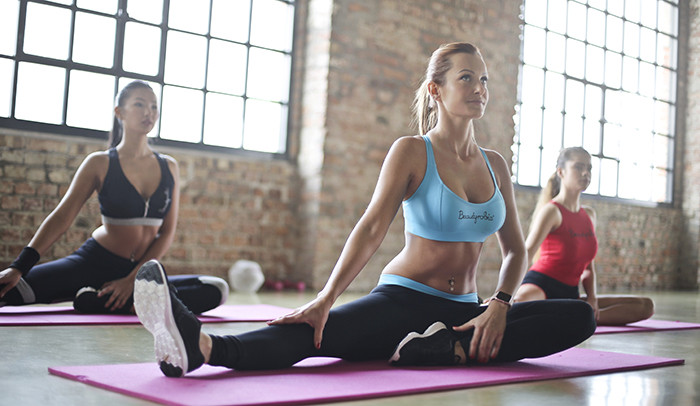
Non essential (but useful) kit
Dharma wheel
Buy now: Amazon | £21.87
Yoga master Sri Dharma Mittra created this tool in 1977 to help people gain increased mobility and flexibility in achieving postures they never thought they could do. It’s a great aid in helping you achieve backbends or even the wheel.
FeetUp headstand chair
Buy now: FeetUp | €119
If you love attempting headstands but always nearly whack the person next to you in the face, then the FeetUp headstand chair is a good inversion aid for practising at home. It enables you to hold a safe and stable headstand posture without any pressure on the neck and spine, as well as giving beginners the confidence to raise their feet skywards.
Yoga mat carry bag or strap
Buy now: Yogi Bare | £26.95
You’ll appreciate one of these if you prefer to use your own mat and need to carry it from home to class and back again. Yogi Bare sells a decent carry strap that is fully adjustable, meaning it snugly fits any yoga mat at the length and height that you find most comfortable.
Common terminology
Some terms and sayings you’ll hear in most yoga classes, and what they mean.
Asana: An asana is the general term used in yoga to describe a pose or posture.
Drishti: A specific place to direct your gaze while in the pose.
Third eye: Refers to the “mind’s eye”; when your eyes are closed, your third eye is said to sit between your two eyes in the central forehead,
Sun salutations: A series of yoga poses performed in a continuous flowing sequence and intended to improve the strength and flexibility of the muscles.
Vinyasa: Vinyasa is the movement between poses in yoga, typically accompanied by regulated breathing, and often used alongside the word “flow” as they form a flowing sequence in coordination with the breath.
Pranayama: This simply refers to the breathing exercises conducted during yoga practice. For most pranayamas, the breath is slow and steady, breathed in and out of the nose and down into the stomach.
Things to remember
Sanskrit: Sanskrit, meaning “refined speech,” is an ancient language of India and often used during yoga classes to describe poses and postures. Not all teachers will use it, but many will, so expect to hear it often. Yoga 108 is a great app to help familiarise yourself with all the yoga poses and their respective Sanskrit names
Chanting (Om): Many yoga teachers – depending on how they’ve been trained and the type of yoga they practise – will start and end a class with a collective “om” chant. The idea is that it sends vibrations up into the chest as a means of physically tuning in and acknowledging our connection to all other living beings, nature and the universe. When you’re not expecting it, or used to it, it can feel a little out of your comfort zone chanting in a class. But be open minded, go with the flow and eventually you’ll learn to join in.
Self-consciousness: The biggest thing to remember, though, is to not feel self-conscious during your first ever yoga classes. The mantra of yoga is about concentrating on your own practice, letting go of your ego and never comparing yourself to the person practising next to you.


